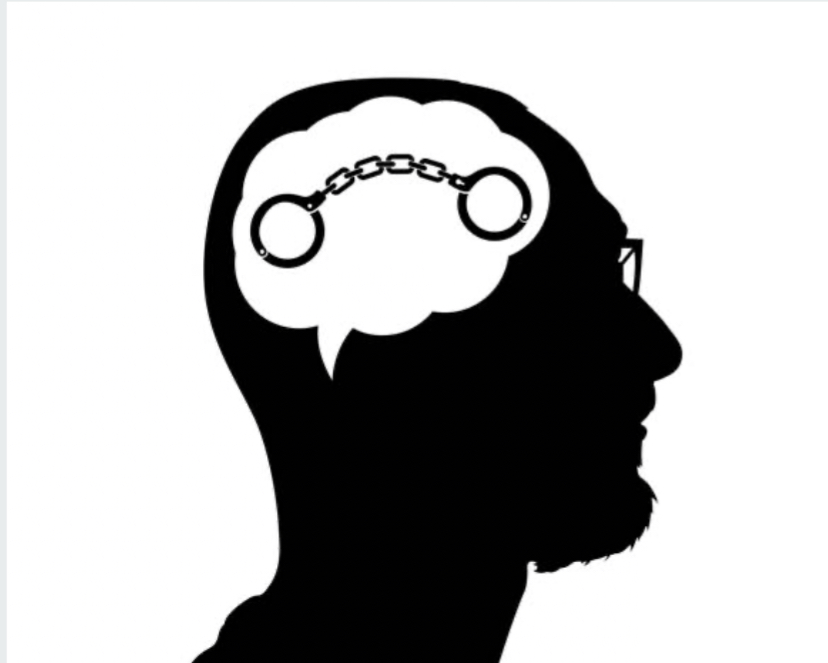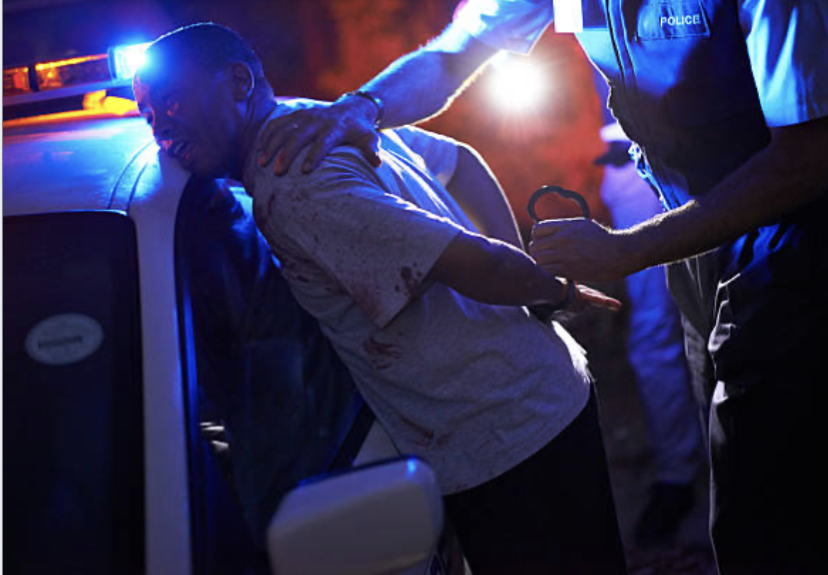General Strain Theory Explanation of Delinquency and Crime


Introduction
General Strain Theory is a widely recognized explanation of delinquency and criminality that focuses on the role of strain or stress in the lives of individuals. Developed by sociologist Robert Agnew who advanced on Merton’s theory of anomie, GST suggests that individuals engage in delinquent or criminal behavior as a response to the strain they experience in their daily lives. This article will delve into the sources of strain, Coping with strain, and the negative impact of strain.
Sociologist Robert Agnew’s General Strain Theory (GST) took a micro view of strain by identifying the individual influences of strain. Whereas Robert K. Merton took a macro view in explaining societal and social class differences in the crime rate, Agnew explains why individuals who feel stress and strain are more likely to commit crimes. Agnew also offers a more general explanation of criminal activity among all elements of society rather than restricting his views to lower-class crime. According to Agnew, strain refers to the negative emotions and feelings that arise from the inability to achieve desired goals. These goals can be economic, social, or personal. When individuals are unable to attain these goals, they experience strain, which can manifest in various forms such as anger, frustration, or resentment. There are multiple sources of strain identified by the theory.
Sources of Strain
Agnew suggests that criminality is the direct result of a state of anger, frustration, and adverse emotions that emerge in the wake of negative and destructive social relationships. He finds that negative affective states are produced by a variety of sources of strain:
Failure to achieve positively valued goals:
This category of strain, similar to what Merton speaks of in his theory of anomie, is a result of the disjunction between aspirations and expectations (goal and means). This type of strain occurs when a youth aspires for wealth and fame but, lacking financial and educational resources, assumes that such goals are impossible to achieve.
Disjunction of expectations and achievements:
Strain can also be produced when there is a disjunction between expectations and achievements. When people compare themselves to peers who seem to be doing a lot better financially or socially (such as making more money or getting better grades), even those doing relatively well feel strain. The perceptions of inequality may result in many adverse reactions, ranging from running away from its source to lowering the benefits of others through physical attacks or vandalizing their property.
Removal of positively valued stimuli:
Strain may occur because of the actual or anticipated removal or loss of positively valued stimuli from the individual. For example, the loss of a girl- or boyfriend can produce strain, the loss of a job, the death of a loved one, moving to a new neighborhood, divorce, or separation of parents. The loss of positive stimuli may lead to delinquency as the adolescent tries to prevent the loss, retrieve what has been lost, obtain substitutes, or seek revenge against those responsible for the loss. For example, a child who experiences parental neglect in his life may seek out emotional needs outside and associate with deviant peers to help fill his emotional needs and in so doing increase his chances of criminality.
Presentation of negative stimuli:
Strain may also be caused by the presence of negative or noxious stimuli. Included within this category are such pain-inducing social interactions as child abuse and neglect, crime victimization, physical punishment, family and peer conflict, school failure, and interaction with stressful life events ranging from verbal threats to air pollution. For example, being a target of discrimination may also trigger the anger and aggression predicted by Agnew. Adolescent maltreatment has been linked to delinquency through the rage and anger it generates. Children who are abused at home may take their rage out on younger children at school or become involved in violent delinquency.
According to Agnew, the greater the intensity and frequency of strain experiences, the greater their impact and the more likely they are to cause delinquency. Each type of strain will increase the likelihood of experiencing such negative emotions as disappointment, depression, fear, and, most importantly, anger. Anger increases perceptions of being wronged, produces a desire for revenge, and energizes individuals to take action. Violence and aggression seem justified if you have been wronged. Because it produces these emotions, strain can be considered a predisposing factor for criminality when it is chronic and repetitive and creates a hostile, suspicious, and aggressive attitude. Individual strain episodes may serve as a benefit such as friendship, companionship, and support, but they also force members into behavior patterns (for example, using drugs) that can be the source of unwelcome stress.
Feelings of strain and being overwhelmed may become magnified as individuals attempt to comply with peer group demands. Kids may, for example, get involved in petty crimes to pay for drugs, creating even more stress in their lives.
Community Source of Strain
The general strain theory focuses on individual-level sources of strain, yet there are distinct ecological variations in the crime rate. Some regions, cities, and neighborhoods are more crime-prone than others. Can ecological differences produce “negative affective states” in large segments of the population? What factors account for these differences? Agnew suggests that there are community-level factors that produce feelings of strain. According to Agnew, communities contribute to strain in several ways:
• They impact the goals people pursue and the ability people have to meet these goals.
• They influence feelings of relative deprivation and exposure to aversive stimuli including family conflict and economic deprivation.
• They influence the likelihood that angry, strain-filled individuals will interact with one another.
Consequently, not only does GST predict deviance on an individual level, but it can also account for community-level differences in the crime rate.
Coping with Strain
Not all people who experience strain fall into a life of crime and eventually resort to criminality. Some can marshal their emotional, mental, and behavioral resources to cope with the anger and frustration produced by strain. Coping ability may be a function of both individual traits and personal experiences over the life course. Personal temperament, prior learning of delinquent attitudes and behaviors, and association with criminal peers who reinforce anger are among other factors affecting the ability to cope. Juveniles high in negative emotionality and low in constraint will be more likely to react to strain with delinquency and antisocial behaviors.
Although it may be socially disapproved, criminality can provide relief and satisfaction for someone living an otherwise stress-filled life. Using violence for self-protection may increase feelings of self-worth among those who feel Some defenses are cognitive; individuals may be able to rationalize frustrating circumstances. Not getting the career they desire is “just not that important”; they may be poor, but the “next guy is worse off”; and if things didn’t work out, then they “got what they deserved.” Others seek behavioral solutions: They run away from adverse conditions or seek revenge against those who caused the strain. Others will try to regain emotional equilibrium with techniques ranging from physical exercise to drug abuse.
Strain and Criminal Careers
While some people can effectively cope with strain, how does GST explain both chronic offending and the stability of crime over the life course? GST recognizes that certain people have traits that may make them particularly sensitive to strain. These include an explosive temperament, being overly sensitive or emotional, low tolerance for adversity, and poor problem-solving skills. Kids who suffer from this form of “negative emotionality” are much more likely to engage in antisocial behaviors, especially if they also are lacking in self-control.
Aggressive people who have these traits are likely to have poor interpersonal skills and are more likely to be treated negatively by others; their combative personalities make them feared and disliked. These people are likely to live in families whose caretakers share similar personality traits. They are also more likely to reject conventional peers and join deviant groups. Such individuals are subject to a high degree of strain throughout their lives.
Crime peaks during late adolescence because this is a period of social stress caused by the weakening of parental supervision and the development of relationships with a diverse peer group. Many kids going through the trauma of family breakup and frequent changes in family structure find themselves feeling a high degree of strain. They may react by becoming involved in precocious sexuality or by turning to substance abuse to mask the strain. For example, research shows that young girls of any social class are more likely to bear out-of-wedlock children if they experience an unstable family life. Adolescence is also a period during which hormone levels peak and the behavior-moderating aspects of the brain have not fully developed -two factors that make adolescent males susceptible to environmental sources of strain.
As they mature, children’s expectations increase; some find that they are unable to meet academic and social demands. Adolescents are very concerned about their standing with peers. Those deficient in these areas may find they are social outcasts, another source of strain. In adulthood, crime rates drop because these sources of strain are reduced, new sources of self-esteem emerge, and adults seem more likely to bring their goals in line with reality.
Evaluating General Strain Theory
Agnew’s work is important because it both clarifies the concept of strain and directs future research agendas. It also adds to the body of literature describing how social and life history events influence offending patterns. Sources of strain vary over the life course.
There is also empirical support for GST. Adolescents who score high on self-report test items that measure perceptions of strain (for example, “my classmates don’t like me,” “adults and friends don’t respect my opinions”) and negative life events (being a victim of crime, the death of a close friend, serious illness) are also the ones most likely to engage in crime. Some research efforts show that indicators of strain – family breakup, unemployment, moving, and feelings of dissatisfaction with friends and school is positively related to criminality. For example, youths who drop out of school are more likely to engage in criminal behavior.
It is possible that removing this positive stimulus (education) has a greater strain effect on those who are expected to succeed because of their class position than on those who already perceive more limited economic opportunities. There is also evidence that the presence of negative stimuli provokes strain.
Gender Issue on General Strain Theory
One of the biggest question marks about GST is its ability to adequately explain gender differences in the crime rate. Females experience as much or more strain, frustration, and anger as males, but their crime rate is much lower. Is it possible that there are gender differences either (a) in the relationship between strain and criminality or (b) in the ability to cope with the effects of strain? Not all sources of strain produce the anger envisioned by Agnew, For example, although females may experience more strain, males may be more deeply affected by interpersonal stress,
There is evidence that stress influences both males and females equally; however, the degree to which it leads to criminal behavior is much higher among males than females. When presented with similar types of strain, males and females respond with different negative emotions, Females may be socialized to internalize stress, blaming themselves for their problems; males may take the same type of strain and relieve it by striking out at others and deflecting criticism with aggression. Consequently, males may resort to criminality in the face of stressors of any magnitude, but only extreme levels of strain produce violent reactions from women.
Conclusion
General Strain Theory provides a detailed explanation for delinquency and criminality by focusing on the role of strain or stress in individuals’ lives. By understanding the various sources of strain and the coping mechanisms employed by individuals, policymakers, and practitioners can develop long-term interventions to reduce delinquency and criminal behavior. Also, addressing the underlying causes of strain, such as poverty, inequality, and social disadvantage, can help create a more just and equitable society.




